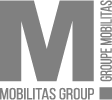
Historically, global mobility policies have remained largely static. As such, you could argue that using ChatGPT to generate a Global Mobility policy would be no different to what a consultancy would do for your programme. After all, these consultancies essentially fuse existing policies together to create a policy that fits your needs. This is, in essence, the difference between curating and creating. Though it may be inspired by what came before, it remains a unique creation.
How does it look in practice?
Using the prompt, “Write a corporate Global Mobility policy,” we tested a free Mac AI Chat Bot powered by ChatGPT. As you can see, the policy it produces is in fact only an outline rather than a document ready for implementation.
What is clear, though, is that the technology is now so clever that if you fed the paid version of ChatGPT multiple GM policies, your business type, size, location strategy, budget and number of assignees, it would likely be able to synthetise this information and create a policy that will fit your needs.
While it may not be as good as what you or a consultancy would create (or curate), it would undoubtably be cheaper and much less time consuming. Here is a 8 step guide on getting your Global Mobility programme’s approval.
A word of caution

It’s risky to rely solely on the technology to carry out this task, however. If used by a manager with little, or no, GM experience this approach would be high risk and they may end up with less desirable elements.
In practice, this means the tool should only be used by GM professionals able to critically inspect the policy produced and make relevant changes. Smaller, less experienced programmes would be well advised to use a consultancy to produce their policy.
If you need support to write (or review) your Global Mobility policies, we are on hand to guide you through the process, using our global experience of more than 40 years to help you deliver a well-considered GM policy that ticks every box.
For a no-strings-attached discussion of your global mobility policy needs, contact us today.
An AI generated GM Policy
Creating a global mobility policy is an important step in managing and ensuring the smooth operation of employee relocation and international assignments in an organization. The policy should outline guidelines and procedures for employees who will be working abroad or transferring between different office locations around the world. Here are the key elements to consider when creating a global mobility policy:
- Objectives and Scope: Define the purpose of the global mobility policy and clarify its scope. Explain who the policy applies to, whether it is applicable to all employees or only specific groups such as expatriates or international assignees.
- Authorization and Approval Process: Establish a clear protocol for authorizing and approving employee mobility requests. Specify who has the authority to grant approval, whether it is based on business needs, individual performance, or any other criteria.
- Types of Assignments: Identify the different types of assignments that employees may be eligible for, such as short-term assignments, long-term assignments, rotational assignments, or permanent transfers. Define the characteristics and expected duration of each assignment type.
- Compensation and Benefits: Detail the compensation and benefits package for employees on international assignments. This can include information on salary adjustments, allowances for housing, education, transportation, cost of living differentials, health insurance, and any other benefits.
- Taxation and Financial Considerations: Provide guidance on the tax obligations and financial implications that employees may incur while working abroad. Address topics such as tax equalization, tax protection, tax planning, and resources available to ensure compliance with local tax laws.
- Relocation and Repatriation Support: Outline the support services and resources available to employees during the relocation process. This can include assistance with visa and immigration processes, housing search, language training, cultural adaptation, and repatriation support upon completion of the assignment.
- Security and Personal Safety: Address any security considerations that may arise in certain countries or regions. Provide guidelines for assessing and mitigating risks, ensuring the safety of employees and their families during international assignments.
- Performance Management: Establish expectations for performance management while on assignment. Determine the performance criteria, evaluation process, and how performance will impact career development and future opportunities within the organization.
- Knowledge Transfer and Succession Planning: Encourage the transfer and retention of knowledge gained during international assignments. Outline a process for capturing and sharing best practices and consider how the experience gained can be utilized for succession planning within the organization.
- Compliance and Legal Considerations: Mention any legal or compliance measures employees need to be aware of while working abroad. This can include local employment laws, immigration regulations, data privacy regulations, and adherence to the organization’s code of conduct.
- Communication and Training: Establish a communication plan to ensure employees are aware of the policy and understand its provisions. Include training programs to educate employees and their managers on the policy’s contents and expectations.
- Policy Review and Updates: Specify the frequency of policy review and indicate how updates will be communicated to employees. Regularly evaluate the policy’s effectiveness and solicit feedback from employees to identify areas of improvement.
Remember, this is an outline to help you get started in creating a global mobility policy for your organization. Make sure to tailor the policy to reflect your organization’s specific needs, culture, and industry. It may be helpful to consult with other relevant stakeholders, such as legal, human resources, and finance departments, when developing the policy.*
*Generated using AI Chat Bot for Mac, powered by ChatGPT.

